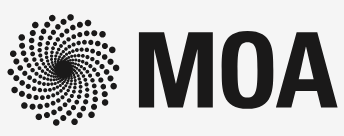Museum of Anthropology at UBC (MOA)
University of British Columbia

MOA is committed to promoting awareness and understanding of culturally diverse ways of knowing the world through challenging and innovative programs and partnerships with Indigenous, local and global communities.
The Museum of Anthropology was established in 1949 as a department within the Faculty of Arts at the University of British Columbia. In 1976, it moved to its current home, an award-winning concrete and glass structure designed by Canadian architect Arthur Erickson with the grounds landscaped by Cornelia Oberlander. The building houses the Museum as well as the Laboratory of Archaeology, its laboratories and storage facilities. To widen its role as a public and research institution, MOA completed a major expansion and renovation in 2010. This initiative increased MOA’s size by 50 per cent, enhancing its public spaces and its research infrastructure adding laboratories, collections storage, research rooms and the Library and Archives featuring an oral history language laboratory. In 2017, MOA opened a new Gallery of Northwest Coast Masterworks and is currently working on expanding its facilities for programming and performances.
Since its inception, MOA has been at the forefront of bringing Indigenous art into the mainstream by collecting and curating traditional and contemporary Indigenous art in a way that respects the artists and the cultures from which this work comes. MOA resides on the traditional and unceded territory of the Musqueam people and works by Musqueam artists welcome visitors to the site.
MOA’s exhibitions and programs emphasize artistic diversity and the links between art, community and the contemporary social and political context in which youth, artists and communities are communicating their cultural traditions. MOA hosts three or four temporary exhibitions a year, as well as a wide range of public programs and events. Each summer, MOA hosts the Native Youth Program, the longest running training program for Indigenous high school students in British Columbia. Other signature programs include Night Shift, a monthly cabaret series featuring local performers.
MOA is also one of Canada’s largest teaching museums with faculty and staff teaching courses in museum studies, museum education, and conservation as well as Indigenous and world art. It hosts practicums and internships for students and has offered curatorial fellowships in conjunction with the Mellon Foundation.
MOA houses nearly 50,000 works from almost every part of the world, while the Laboratory of Archaeology houses an additional 535,000 archaeological objects in the building. MOA is known for its sizable Northwest Coast collections, including the finest collection of works by Bill Reid. Nearly half the collection is composed of works from Asia and Oceania while other significant holdings represent the Arctic, Latin America and Europe. MOA’s collection of world textiles is the largest in Western Canada, while the European ceramics collection is one of the two finest in the country.
MOA’s archives house the Museum’s institutional records and extensive holdings from anthropologists, linguists, missionaries and other travelers. Highlights include over 90,000 photographs, covering the world and dating from the 1890s to the present; the Vickie Jensen and Jay Powell fonds covering over 40 years of linguistic work in communities throughout BC and Washington State, including over 30,000 unique photographs; the Wilson Duff fonds, and the Beverley Brown fonds containing photographs of St. Michaels Residential School. Some of the earliest photographs of Tibet are also in the archives’ holdings.
MOA is run through a unique mixture of cross-appointed faculty, professional staff, volunteers and students. MOA’s volunteer associates are a self-governing body of approximately 100 volunteers who provide a range of services to the Museum. MOA also hires approximately 80 students each year.